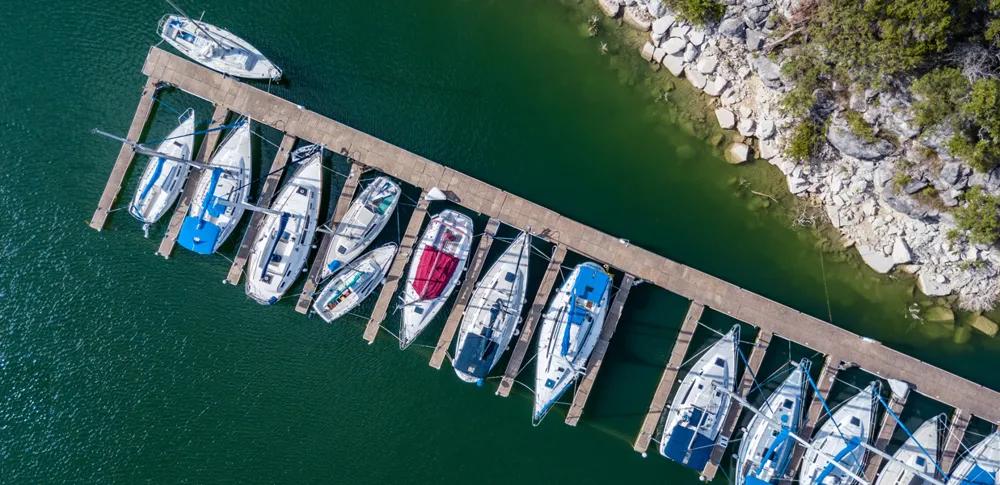Buying a home in Fort Lauderdale and own a boat?
It's important to know if your boat can fit under the bridges so you can go where you want.
Fort Lauderdale’s Bridges & Boating: How Big of a Boat Can Get Through?
Nicknamed the "Venice of America," Fort Lauderdale is known for its scenic canals, waterfront homes, and boating lifestyle. But for every yacht cruising the Intracoastal or docked at Las Olas, there’s one constant obstacle to navigate: the bridges.
Bridges in Fort Lauderdale don’t just connect the roads — they shape the boating experience. And if you're captaining a vessel, knowing which bridges open and what their clearance is could make or break your trip.
Let’s break it down.
Types of Bridges in Fort Lauderdale
There are two main types of bridges boaters deal with:
Fixed Bridges
These do not open and have a set clearance height. If your boat is too tall, you’re not going under.
Bascule (Draw) Bridges
These open on a schedule or on demand for taller vessels. Most are double-leaf bascule bridges with large counterweights that lift the road span.
How Tall Is "Too Tall"? Understanding Bridge Clearance
Most fixed bridges in Fort Lauderdale have vertical clearances of around 14 to 17 feet at mean high water. That means:
- Center consoles, ski boats, and many cabin cruisers can go under easily.
- Sailboats, sportfishers with towers, and mega yachts need bridges to open.
- Some taller flybridge yachts or boats with radar arches may barely squeeze under depending on tide.
Many of the bascule bridges open for vessels taller than 14–18 feet, and most will open on the quarter hour and three-quarter hour during daylight.
Common Fixed & Bascule Bridges (and Their Clearances)
Here are some key bridges in the area, especially along the New River and Intracoastal Waterway:
Intracoastal Waterway Bridges (North to South)
- Oakland Park Blvd Bridge (bascule): 22 ft closed
- Sunrise Blvd Bridge (bascule): 18 ft closed
- Las Olas Blvd Bridge (bascule): 20 ft closed
- SE 17th Street Causeway Bridge (bascule): 21 ft closed → Opens frequently and accommodates very large vessels heading to Port Everglades
New River Bridges (heading west through downtown)
- Henry E. Kinney Tunnel (for cars, not boats — goes under river)
- Andrews Avenue Bridge (bascule): 18 ft closed
- Third Avenue Bridge (bascule): 14 ft closed
- Railroad Bridge (FEC/Brightline): Only 4–5 ft closed, often the biggest delay → Controlled by the railway, not the city — opens only when a train is not coming
Further west:
- Davie Blvd Bridge (bascule): 10 ft closed → Important for boaters heading upriver to residential areas and marinas
The Trickiest Bridge: The Railroad Bridge
The Florida East Coast (FEC) Railroad Bridge, near the Broward Center for the Performing Arts, is low and slow to open. Clearance is only about 4–5 feet when closed, so most boats can't get under it. Since it’s operated by Brightline and freight rail, it's not always predictable — which causes backups.
If you’re heading up the New River with a tall boat, factor in delays here.
How Big Can a Boat Be?
Here's a general idea of what you can get through Fort Lauderdale’s waterways:
Height (air draft):
- Boats under 13–15 feet tall can typically pass under most fixed bridges at high tide without issue.
- Taller vessels (up to 60–80 feet air draft) can go through as long as drawbridges are open.
- Mega yachts with masts or towers over 85–100 feet usually stick to the Intracoastal and Port Everglades area or anchor offshore.
Length (LOA):
- The city is home to marinas that can accommodate yachts up to 300+ feet long.
- Width (beam) is rarely a limiting factor in canals — but docking may be tight in residential areas.
Local Tips for Boaters
- Timing matters: Many bridges open every 15 to 30 minutes, especially during peak hours.
- Call on VHF Channel 9: You can request an opening if needed — especially helpful if you’re waiting with a line of boats.
- Tide makes a difference: Clearance is measured at mean high water, so boats may squeeze under at low tide.
- Bridge openings are posted: There are tide boards and signage at most bridges showing real-time clearance.
- Don’t linger in the fenders: When waiting for a bridge to open, avoid getting caught in strong currents near the fenders or supports.
The Bridge-Boating Balance
Fort Lauderdale’s boating culture thrives alongside its urban design. The city’s 165 miles of waterways are both playground and commute route for boaters. But it comes with a dance — timing your trip, planning for bridges, and sometimes waiting patiently.
In return, you get something few cities offer: the ability to cruise from your backyard to the Bahamas without ever hitting a highway.



